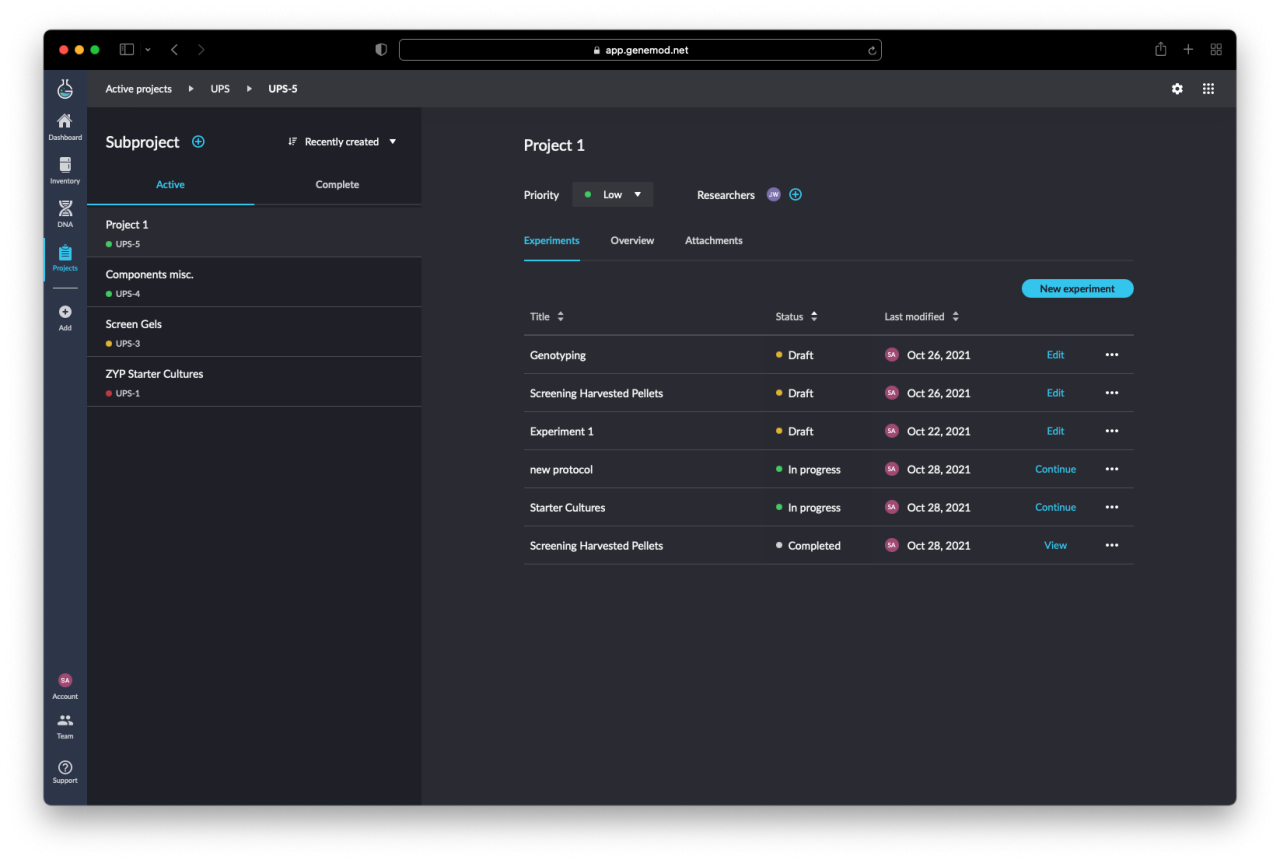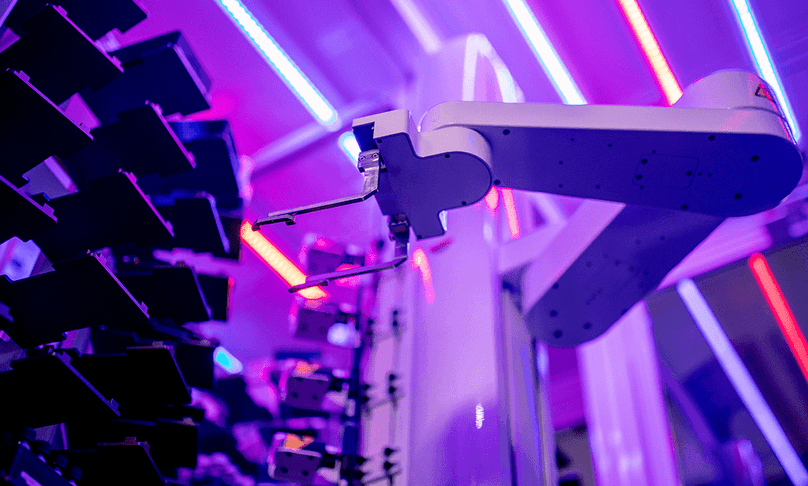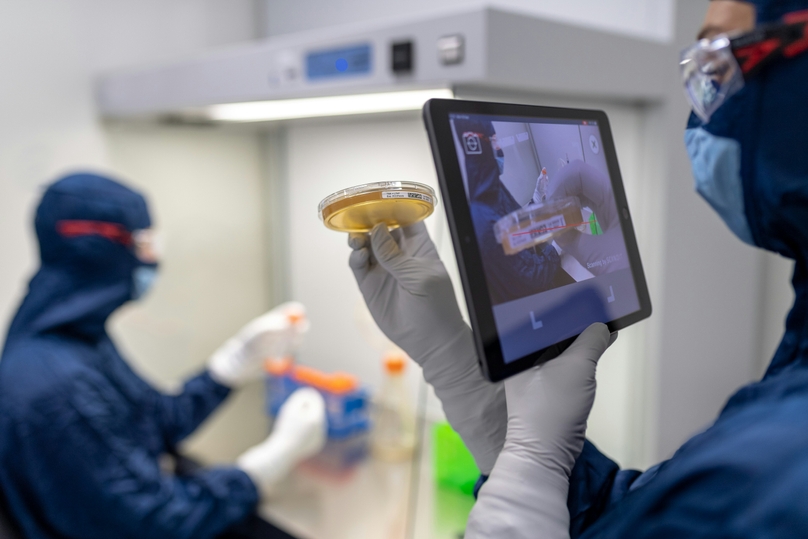As the novel coronavirus continues to spread at alarming rates in the United States and the rest of the world, it is clear that remote collaboration (including lab work) are going to become a part of our new normal in the near future and beyond. It is without a doubt that the COVID-19 pandemic is highlighting changes that were already underway in the practice of medicine. Remote doctors’ appointments, video calling, and even remote lab work are going to become the new norm.
A study recently conducted by Sermo (a physician online community) found that 85% of health care providers are seeing patients through some sort of video calling platform. 68% of these reported that they believe this format will have a lasting effect on the telemedicine industry. 77% of doctors support the shift to telemedicine as it reduces costs and is unarguably more convenient for patients and doctors. The telemedicine market is projected to reach $155 billion by the year 2027. (Miller, 2020).
Just as physicians and healthcare providers are having to make the switch online, so are their most valuable counterparts – labs. As you might’ve guessed the switch online looks much different for labs and is equally as important. You might be thinking; “how are you supposed to move experiments online?” Remote lab collaboration is not only an essential part in defeating the novel coronavirus but it is just as important that labs can hit the ground running when COVID-19 is tamed and that their other experimental progress is not lost. We’ll cover a few tips and tricks that will help you keep your lab on track during these unprecedented times.
This is a very unique and stressful time for many lab scientists as the public is laser focused on the scientific research community to deliver answers and save us all from the ensuing global pandemic with no real end in sight. Many industries are able to quickly adapt to our “new normal” by offering remote instruction, online courses, and curbside pickup services.
But, this sort of reformatting is much more complicated for laboratories. There are many points to be considered when a lab has to make this kind of shift. What about the hazardous materials or experiments in progress with live animals or cell organisms? These cannot just be “moved online” like many other organizations have had the ability to do. What about safety precautions and social distancing guidelines implemented by government officials? The very virus we are trying to defeat is holding us back from conducting the research needed to fight it off – quite ironic.
Many of us fail to consider the many implications not coming into the lab can have. It is not just the staffing challenges, it is the facility closure that leads to research delays and even supply chain disparities that make it harder for the necessary research to get done regardless of whether you have staffing challenges or not.
However, it is important to realize that the coronavirus shutdowns do not mean labs cannot get any work done. In fact, there is still a lot that can be done to keep folks productive and engaged during the pandemic. First of all, catch up on any sort of writing you would have otherwise not had time for. For postdocs, this may look like taking time to review fellowship opinions and application writing. What about all those tasks you have been putting off on your regular days in the lab? Now is a great time to do some reorganizing of data and even physical reagents in the freezers in the lab – as long as you meet social distancing guidelines. Now is also a great time to back up lab documentation and complete various cataloging duties. If you don’t have a master list of all plasmids, reagents, etc... now is the time to start one
There are many ways a lab might be able to accomplish this sort of reorganization including implementation of lab information management software (LIMS) that increase organization and productivity. Here at Genemod, our vision is to standardize lab automation so that you focus on what matters and deliver results faster. We are at the forefront of an industry that was already on the rise but is now becoming more valuable and relevant in light of the pandemic.
Our cloud-based software platform allows users to assess data from anywhere and includes project management, sequence editing, and freezer tools all designed for ease of use and increased productivity. Now is the time to rethink the way you manage your lab and move to digitally innovative solutions as disparities brought out by this pandemic may be long lasting.
The best part? Moving to a cloud-based lab information management system from home is easier than one might think. We offer free data migration in as little as 72 hours and a free 30-day trial. Once data migration is complete, your workforce will be able to instantly remotely collaborate on their research as anyone on the team can access data on the platform from anywhere. While it is inevitable that a lot of productivity and advancement will be lost in labs across the nation this year, it is important to stay optimistic and proactively take steps to combat the losses from the pandemic. Below are some examples of how our LIMS software can help you do just that:




Laboratories must view the current situation as an opportunity, not a setback. If labs approach the current situation with enthusiasm and open mindedness, the changes implemented could have immense long-lasting positive outcomes. US laboratories have a proven track record of persistence and resilience, and it will undoubtedly become more bona fide even after the pandemic is over.
Not only do our labs play a vital role in the health and safety of the American people, they will likely play a large and vital role is the curtailment of the novel coronavirus. Now is a time more important than ever to come together as a team, practice open communication, and trust your colleagues whether they be lab scientists, support staff, or technicians. Resilience, strong leadership, and adaptability will help shape positive outcomes for the efforts against the COVID-19 pandemic.
It is important to remain positive and shift your definition of what it means to be productive. After all, the definition of what it means to be productive was much different six months ago than it is now. Hang in there, do as much as you can to get your lab organized, and most of all, build collaboration dynamics within your team that will be everlasting when the pandemic is over.
References:
Miller, Jen. “COVID-19 Is a Catalyst for Remote Sampling and Telemedicine.” AACC, 2020, www.aacc.org/publications/cln/articles/2020/july/covid-19-is-a-catalyst-for-remote-sampling-and-telemedicine.
Adamala, Kate. “Opinion: Lab Work Under Isolation.” The Scientist Magazine®, 2020, www.the-scientist.com/news-opinion/opinion-lab-work-under-isolation-67398.


















